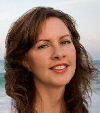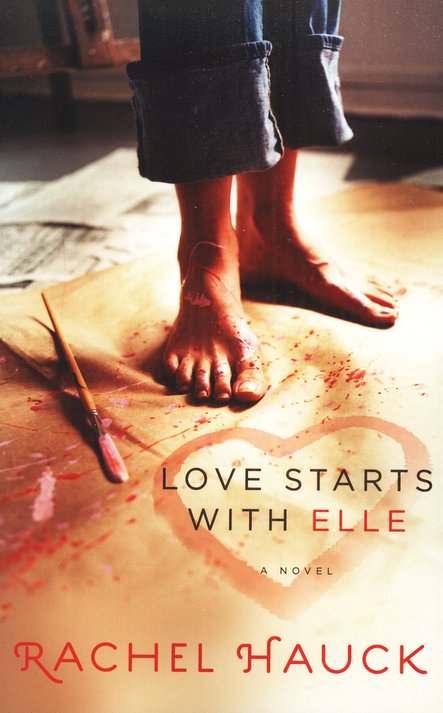 Best-selling author and award
winning author Rachel Hauck lives in
central Florida with her husband and loving pets. She earned a B.A.
degree in Journalism from Ohio State University and spent seventeen
years in the corporate software world before leaving to write full
time. Rachel loves to teach and mentor writers.
|
|
Chick lit: Life after Bridget Jones and Ashley Stockingdale |
|
|
I’ll always have a soft spot in my heart for Bridget Jones. She launched my career. As a struggling romance writer trying to let my “voice” be heard, Ms. Jones and stories like hers helped put the trumpet to my lips. Tell a single woman’s story of friends, family, career, and romance in first person? No problem. I lived it and recorded it all in college rule notebooks, from ages thirteen to thirty-one. What kind of story do you want? Running up my credit cards to finish college and finance my ’80s yuppie life? Career angst when my boss refused to give me a raise? How I traveled so much for this so-called career that I had romance angst? Friendship betrayal? A blind date with a sweet Southern redneck who had to remove the beer bottles from the passenger seat before I could climb into his truck? Hello, I’m Rachel Hauck, and I am chick lit. But writing chick lit in novel form didn’t prove to be as easy as I’d thought. I read Bridget Jones’s Diary and Getting Over Jack Wagner scratching my head: Where’s the plot? Isn’t a book supposed to be about more than a list if I Wills and I Won’ts, and a continual diatribe of bad dates? When Kristin Billerbeck broke onto the chick lit scene in 2003 with her first of many excellent chick stories, What a Girl Wants, starring Ashley Stockingdale, I finally found a voice and story that resonated with me. Unlike Jones and other chick books, Billerbeck brought hope, along with faith and humor, to the characters. Angst with a laugh. What is chick lit? A woman’s story. The protagonist may range in age from twenty to fifty, but she is the star, and her life is the plot. She may be dealing with a broken heart, addiction, career changes, divorcing parents, menopause, weight, exercise, bad hair, cheating husband, pregnancy, financial woes, marriage, babies, or perhaps waking up one day to discover the intimate details of her life have been told in a newspaper column. In the beginning of chick lit, the heroine was a big-city, career girl working in marketing, advertising, journalism, or PR. Gradually, she became a lawyer, a housewife, a songwriter (yours truly), and she moved from urban settings to suburbia—even lived in other countries like Japan. But the heroine remained a character driven by her passions, desires, weaknesses, and observations of the world around her. Author Tracey Bateman brought mom lit to life with her Leave It to Claire series, and Diann Hunt took us into the humorous and quirky mind of a menopausal woman in Hot Flashes & Cold Cream. How does chick lit differ from women’s fiction or romance? Tone. A chick story has an intimate, personal tone, often written in first person, that draws the reader into a girl-to-girl conversationas if sitting cross-legged on the bed, face-to-face, munching popcorn. “No, he didn’t! Then what?” Chick lit is personal. Voyeuristic. The reader follows the heroine through her day, listening, watching, reading her e-mails and diaries, eavesdropping on her dates and conversations. The reader is privy to her most intimate details. The chick heroine is imperfect and she knows it. She overcomes when all the odds are against her. She’s quirky yet manages to charm everyone around her. She makes lists. How many of us, male and female, can relate to waking up in the morning, vowing we will “not” overeat, drink ten cups of coffee, or gossip in the office hallway? But at the end of the day, we’ve violated all our resolves to become a better person? This is chick lit. It’s all about “voice.” Authors are forever in search of or fine-tuning their voices. What words, phrases, or tone do they use to tell the story, speak through the characters to the reader? When chick lit burst onto the scene, it gave room for female authors who told stories with a kitschy, edgy tone and humor. She and her protagonist could laugh at themselves and the world around them while enticing the reader to cheer them on. Readers, yea, the human race, can take only so much self-deprivation. Right? A chick lit heroine takes us right to the edge of frustration (If I have to read one more time about how much she weighs . . .), then she suddenly wakes up, grabs the reins of her life, and runs victoriously to the story’s end. Ah, now we want to be like her. |
The changing face of chick lit Chick lit made it cool to name-drop people, places, and products. Especially shoes. Manolo Blanhnik, anyone? Jimmy Choo? Our protagonist drank Starbucks and Diet Cokes. She went on a year-long honeymoon and shopped in Milan. She had an Upper East Side apartment. The men she loved were rich, maybe famous. A recent American release of a British chick lit was edited to reflect the economic concerns of the day. A character is not taking off a year after college to find herself. Instead, she’s worried about finding a job. Characters talk about how to keep their 401(k)s healthy instead of their plans to sun on a Mediterranean beach. Chick lit must reflect the tone of the heroine in societymuch like Jane Austin did in her day with works such as Pride and Prejudice and Emma. Where did the lits go wrong? I sold my first chick lit in 2004, but by my 2006 release, the hype and fascination with this genre was beginning to fade. Readers began to complain about an influx of first-person, present-tense stories. Editors were overwhelmed with so-called chick-litish proposals in which the author merely substituted the “I” pronoun for the “she” pronoun. “I” does not a chick lit make. When asked what she thought of the state of chick lit, Kristin Billerbeck said, “Lits are still wildly popular, but they’re called Women’s Fiction now. Lits have always been about voice, and I think the market got flooded with voices that didn’t work for the genre. The punch line would come at you like a Mack truck. Humor in lits should be more subtle, more subtexted like Jane Austen’s humor.” And really, how many girls’ diaries do we want to read? How many pratfalls can we watch? When did snarky and rude become a substitute for humor? Chick lit gained the reputation of being silly and “light.” My motto for writing chick lit was always “Dive deep and surface fast.” Meaning, deal with the serious issues modern women deal with, but don’t be maudlin. Don’t navel gaze. Add real humor. Chick lit today The genre, at least in the CBA world, is now labeled Contemporary Fiction. Authors Jenny B. Jones and Billerbeck are bringing quirky, down-to-earth, real chick heroines to teen readers. Chick lit might be about a religious sister, a Puritan daughter, a low-country café owner, an artist, or an endearing self-taught PI named PJ Sugar. Authors like Lisa Samson, Siri Mitchell, Susan May Warren, and, yes, yours truly are still writing stories about a single woman’s journey through life. She’s quirky and unsure, she’s serious and funny. She loved and lost, but most of all, she wants to find her destiny. She wants to love God and love others. As long as readers love Jane Austin, chick lit will be alive. But it is a flowing, changing genre that reflects the spiritual and social landscapes. If you’ve not read chick lit, pick up one and give it a try. I promise, you’ll laugh, you’ll cry, and you’ll love it. |
|
|
|
|
|
|









